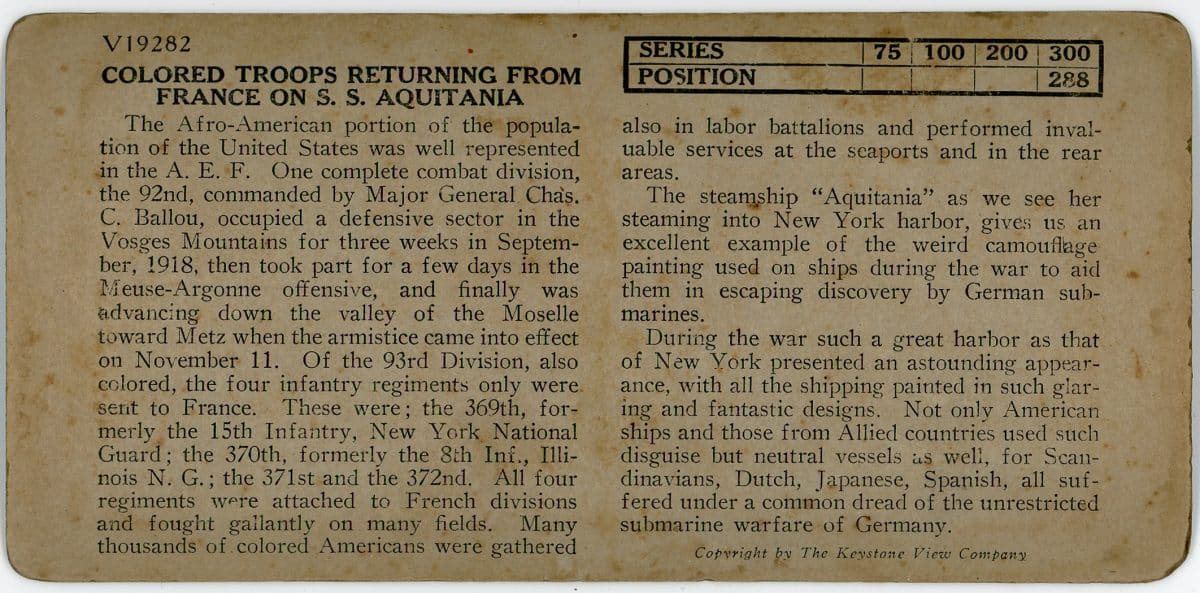Curved Stereoview photo shows the S. S. Aquitania. The caption reads: ” v19282–Colored Troops returning from France on S.S. Aquitania, New York.”
The left margin reads “Keystone View Company Manufacturers, Publishers, Made in USA, Copyrighted, Underwood and Underwood” The right margin reads: “Meadville, Pa,. New York, N.Y., Portland, Oregon, London, Eng., Sydney, Aus.”
Back text reads: “V19282 Colored Troops Returning From France On S.S. Aquitania The Afro-American portion of the population of the United States was well represented in the A.E.F. One complete combat division, the 92nd, commanded by Major General Chas. C. Ballou, occupied a defensive sector in the Vosges Mountains for three weeks in September , 1918, then took part for a few days in the Meuse-Argonne offensive, and finally was advancing down the valley of the Moselle toward Metz when the armistice came into effect on November 11. Of the 93rd Division, also colored, the four infantry regiments only were sent to France. These were: the 369th, formerly the 15th Infantry, New York National Guard; the 370th, formerly the 8th Inf., Illinois N.G.,; the 371st and the 372nd. All four regiments were attached to French divisions and fought gallantly on many fields. Many thousands of colored Americans were gathered also in labor battalions and performed invaluable services at the seaports and in the rear areas. The steamship “Aquitania” as we see her steaming into New York harbor, gives us an excellent example of the weird camouflage painting used on ships during the war to aid them in escaping discovery by German submarines. During the war such a great harbor as that of New York presented an astounding appearance, with all the shipping painted in such glaring and fantastic designs. Not only American ships and those from Allied countries used such disguise, but neutral vessels as well, for Scandinavians, Dutch, Japanese, Spanish, all suffered under a common dread of the unrestricted submarine warfare of Germany.” “Copyright by The Keystone View Company”



